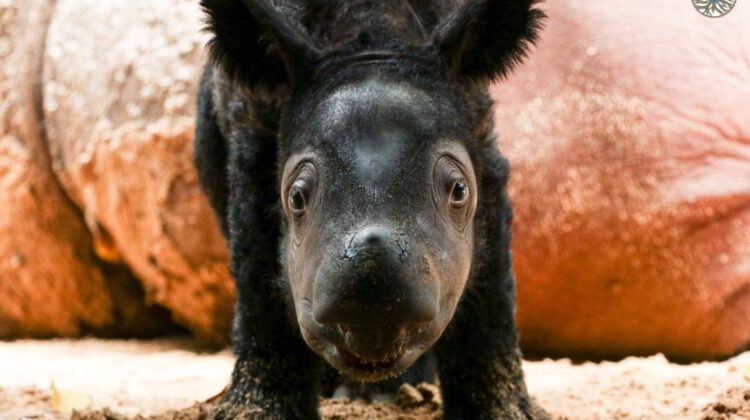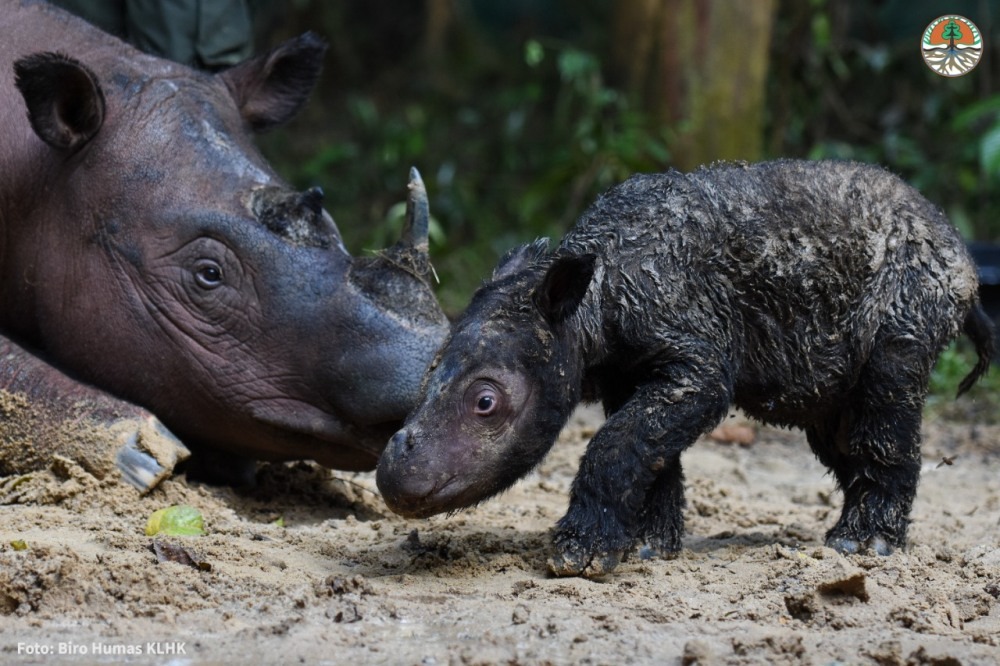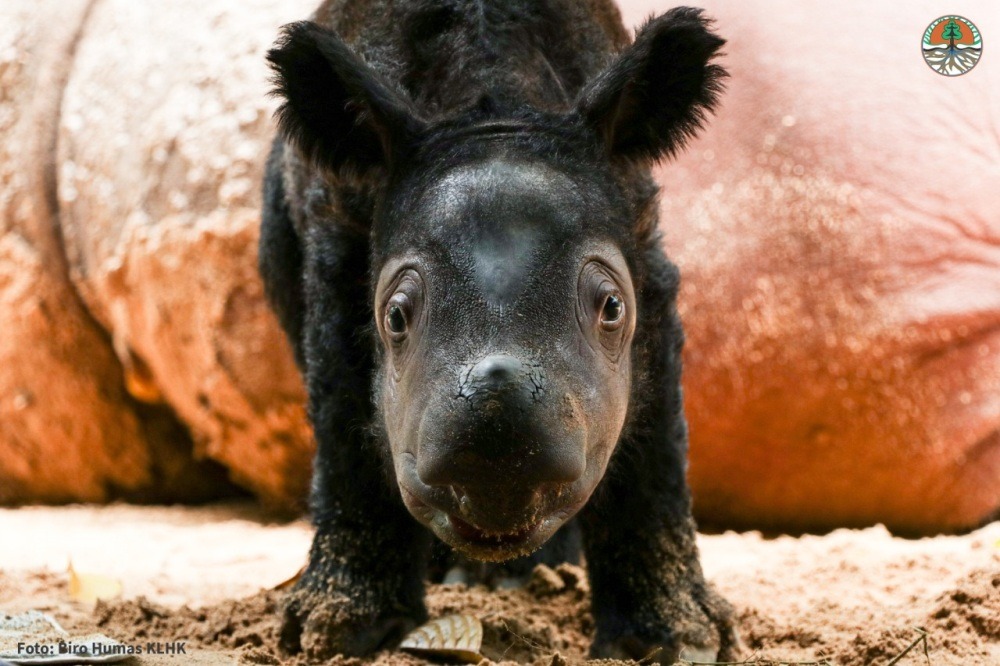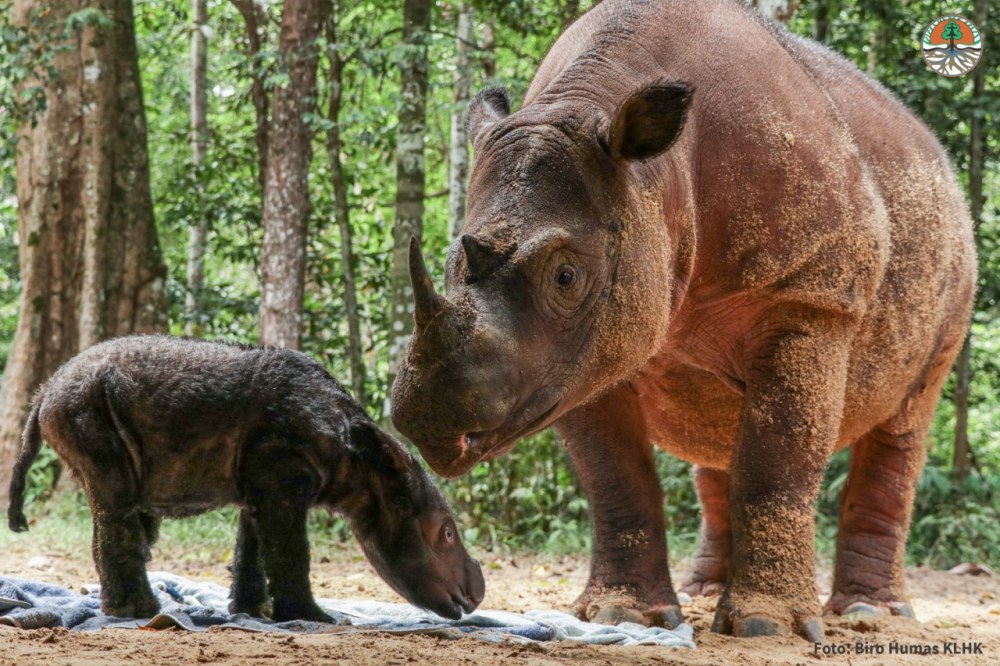
The government of Indonesia recently announced the birth of a female Sumatran rhino — a species with fewer than 80 wild individuals – in the Sumatran Rhino Sanctuary in Indonesia.

The Sumatran rhino (Dicerorhinus sumatrensis) is the most endangered of the five rhino species still alive, according to the World Wildlife Fund. The International Union for Conservation of Nature (IUCN) Red List has it listed as severely endangered.
The species used to thrive in China, Malaysia, Thailand, Indonesia, Laos, Myanmar, Bangladesh, Bhutan, and India’s jungles and marshes. Members of the species can now only be found in Indonesia after the deaths of the final two known Sumatran rhinos in Malaysia in 2019. Their numbers have plummeted in the last 30 years, owing mostly to poaching epidemics: there are thought to be less than 80 in the wild and just 8 in captivity.
The birth of a calf in the Sumatran Rhino Sanctuary (SRS) in Indonesia, for the first time in the Sanctuary’s 26-year history, provides a ray of hope.

The SRS was formed to ensure the Sumatran rhino’s existence and prevent extinction. It is now the sole area where the species may reproduce naturally with the aid of cutting-edge technology and international specialists. The surviving Sumatran rhinos are cared for and fed at SRS, where they reside in broad, open forest regions that are identical to their native environment.
The mother is Rosa, and the father is Andatu, who was also born under the conservation breeding program, according to Mr. Wiratno, the Director General of Natural Resources and Ecosystem Conservation of the Ministry of Environment and Forestry. Rosa, the mother rhino, had previously lost eight pregnancies, therefore the birth of the newborn rhino was a major achievement. This is also the first time a Sumatran rhino has been born from a parent who has been part of a conservation breeding program.
“The Sumatran rhino’s birth is welcome news as the Indonesian government and partners work to boost the Sumatran rhino population,” Wiratno said. “I am grateful to the team of vets and keepers who have been monitoring rhino Rosa’s pregnancy and postnatal care on a regular basis.”

Rosa is sociable in comparison to other Sumatran rhinoceros, who are shy and lonely creatures. Rhino Protection Units in western Sumatra began getting reports in 2003 about a baby rhino roaming around communities and important highways in Bukit Barisan Selatan National Park. Rosa grew accustomed to living and feeding among humans, despite the fact that Sumatran rhinos are believed to avoid humans at all costs.
A special force was tasked with keeping an eye on her and protecting her. Rangers, park officials, and other authorities thought her actions put her in danger, thus she was sent to the SRS after numerous debates. Rosa, thankfully, quickly adjusted to her new home at the refuge and has been living there happily ever since.

Rosa and her calf are yet to be given a name, but the International Rhino Foundation will keep the public updated on their progress. As a result, a name reveal announcement might happen at any time.
While it takes a lot of effort and perseverance to rescue a species on the verge of extinction, the birth of this baby rhino gives the Sumatran rhinos hope, and we hope to see them thrive once again. Because the surviving Sumatran rhino populations are so tiny, each individual makes a significant difference, according to Nina Fascione, Executive Director of the International Rhino Foundation.
She stated, “We will do all necessary to safeguard the continuation of this species that Rosa and her foal represent.”
